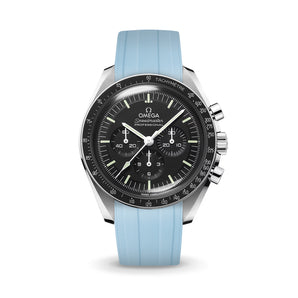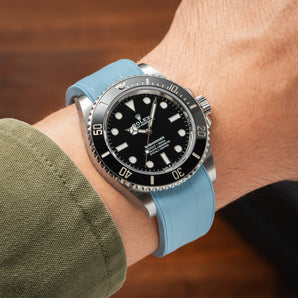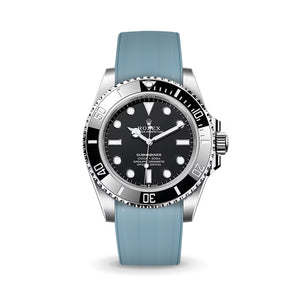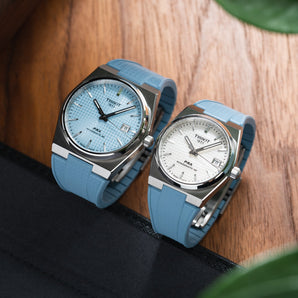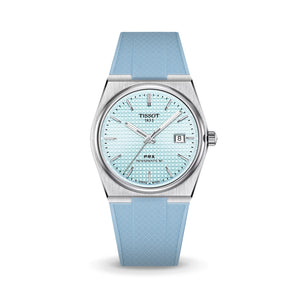Update (17 Jan 2025): Rubber straps for the Cartier Santos de Cartier, using our in-house developed D-Lock adapter, are now available.
We recently announced that we would be stopping the sales of our Santos de Cartier straps. Here’s the full story of what happened, our thoughts on this episode, the state of the industry regarding interchangeable strap attachment systems, and some common questions that we received over the past few days.
The Facts

The Cartier Santos de Cartier watch comes with a bracelet and leather strap, and these are fitted with the proprietary “Quick Switch” interchangeability system. This system is needed to fit a strap to the Santos de Cartier – there is no other way of producing a strap to fit the watch without it.
We have been producing and selling Delugs-branded Santos de Cartier straps since Nov 2021, using aftermarket adapters that contain the same Quick Switch system.
In Dec 2022, we received a letter from Richemont IP office, informing us that the Quick Switch system is patented by Cartier in Switzerland, that we had been importing our watch straps into Switzerland and infringing on Cartier’s patent, and that we had to stop the sales of our Santos de Cartier straps.
We temporarily suspended sales of the Santos de Cartier straps while the matter was still under discussion, and we were trying to work out an a win-win solution for Cartier, Delugs, and the watch community. Shortly after, we received notice from Richemont that we will be given a six-month period to comply with Cartier’s patent.
We will continue selling our Santos de Cartier straps with Quick Switch system until May 2023, and plan to stop selling the straps with Quick Switch system thereafter, unless the situation further evolves.
Personal Thoughts and Perspectives
It's no secret that I'm personally a fan of Cartier watches, and this development has been very disappointing for me, both as the founder of Delugs, and as a Cartier enthusiast.
I love not just Cartier watches, but also the brand and business. I truly respect what Cartier’s watch division has achieved over the past few years, with a range of iconic watches across the entire price range, catering to both male and female customer base. Under the leadership of Mr Cyrille Vigneron, Cartier watch division has been revitalised and the watches, both modern and vintage, have been incredibly popular amongst watch collectors.

Making straps specifically for Cartier watches was never just a "business decision" for me - as an owner of these watches and someone that enjoys what the brand is doing, I wanted to provide value to the rest of the Cartier community by doing what I do best – producing high quality straps specifically made for these watches, offering more strap options beyond what Cartier has on offer, and provide more enjoyment to people as they wear their Cartier watches. To that end, we have produced straps for the Santos de Cartier, Santos-Dumont, Tank, and have plans to release straps for other Cartier models. These have all been very well received.
Making straps for the Santos de Cartier was something that many Cartier owners had been asking us for, because there were limited options on the market owing to the use of the Quick Switch system. It was a challenge that we undertook, to find a manufacturer for these adapters and to craft straps fitted around these adapters, giving customers the option of picking from our wide range of leather options.
However, when we first started selling these straps, we didn’t know that the Quick Switch system was patented. We didn’t even know if we could make these straps, and our top priority was to see if we could find a manufacturer for the adapters, and produce straps with the system that would fit the Santos perfectly. Once we made the first samples and established that it was possible, we started taking orders right away, so that we could get these straps into the hands of as many watch lovers as quickly as possible.
When we were served with the letter from Richemont informing us of the patent and asking us to stop the sales of the SdC straps, two emotions came to mind. First, I was surprised (and flattered) that a small business like Delugs got the attention of a brand as big as Cartier and Richemont. Second, I was disappointed to find out that firstly, the system was patented, and that secondly, Cartier was prepared to enforce the patent on us, a third party strap maker.
A Situation Where Everyone Loses
Having run Delugs over the past few years, I truly believe that there’s a symbiotic relationship between watch brands and strap brands – we each support each other and benefit from the relationship. This move by Cartier to enforce their patent on us, while justifiable and well within their rights, is ultimately a lose-lose situation for Cartier, us and the watch community.
Ever since we started producing the Santos straps, we have had many people come up to tell us that they had bought the watch only because they knew that we were producing straps for the watch.
In selling these straps, we have also invested significant resources in marketing the strap and by extension, the watch. We have taken hundreds of photos of the Santos, posted them over a few dozen times across social media and on the web, had reviews done on the strap, and spent a lot of money taking out advertisements for our Santos straps. Collectively, our marketing efforts for the Santos de Cartier has reached hundreds of thousands of watch collectors. Investing dedicated marketing effort towards a single watch is something that watch brands might have trouble doing, given the wide range of products that they have.
It is possible that some collectors who would have bought Santos straps from Cartier, would have instead bought from us because we offered an alternative, and this represents a loss in revenue from Cartier’s perspective. But at the same time, strap sales probably make up an incredibly small part of any watch brand’s revenue, compared to the revenue from the sale of a watch.
While we can never be certain about this, my guess is that since we started producing and selling the Santos straps, we have probably netted Cartier more than a few additional sales in Santos, more than enough to offset the loss of revenue in strap sales. Once we stop selling these straps, owners of Santos watches are left with fewer options for leather straps, our marketing efforts would stop, and there would be reduced interest and sales in the Santos watches.
While I greatly appreciate the additional six month of grace period provided by Cartier, in the longer term there will still be fewer options for Santos owners. It is my hope that watch brands will recognise this symbiotic relationship between strap makers and watch brands, see the potential, and not the pitfalls, of supporting the third party strap ecosystem, and not adopt an overly antagonistic position towards strap brands that guarantees everyone loses.
Interchangeable Strap Attachment Systems
There’s been a recent trend in the industry towards interchangeable strap attachment systems, and I hope that this episode of brands locking customers into their proprietary technology is not a sign of things to come in the industry, because it would be a big loss for the watch community in terms of diversity and options.
Apart from Cartier with the Quick Switch system, there’s the IWC Pilot with the EasX-CHANGE, Audemars Piguet Royal Oak Offshore, Vacheron Constantin Overseas, Czapek Antarctique, and probably a few others on the market. It is unclear how many, and which, of these strap attachment systems are patented.

These systems offer a much easier way of swapping between metal bracelet and leather or rubber straps. Instead of using screws or non-quick release spring bars for attachment, these new attachment systems feature some type of mechanism that allows for the bracelet or strap to be removed and inserted without the use of tools. These systems have varying complexity, ranging from the commonly used quick release spring bars, to the "secured hook" system found on IWC Pilot, Vacheron Constantin Overseas and Czapek Antarctique, to proprietary technology like the Quick Switch system.
Watches with these interchangeable attachment system have a clear edge over watches that do not, and it’s definitely a sign of technological improvement and progress in the industry. For example, comparing the 2nd generation Vacheron Constantin Overseas and the 3rd generation VCO, the ability to swap between bracelet, leather strap and rubber strap on the 3rd-gen VCO for different look is clearly a big draw for customers.
As a watch collector, it is my hope that the development and use of these systems is solely to provide for a better experience for the watch owner, and that brands do not use this as an opportunity to alienate third party strap makers that have somehow managed to produce the straps with the same system. Third party strap makers form an integral part of the watch ecosystem, and make the entire hobby more enriching and diverse.
Some Questions We’ve Received
What happens now?
With the six month grace period provided by Richemont and Cartier, we will continue to take orders for our Santos de Cartier straps until May 2023.
Beyond May 2023, whether we can continue selling these straps will depend on the situation with Richemont / Cartier. If there are no further development, we will no longer sell Santos straps featuring the Quick Switch system.
Can Santos de Cartier straps be made without the Quick Switch system and still fit? Is it possible to modify the adapter?
It might be possible to modify the adapter such that it is physically different from the current adapter that Cartier uses, and it could still securely attach the strap to the watch.
However, patents are generally worded broadly enough that there is still a possibility of infringement even with modifications. There’s no way of knowing for sure if a piece of technology infringes on an existing patent until it is made, the patent owner sues, the case goes to court, and the judge gives a ruling.
Are the other Cartier watch-specific straps, such as the Tank and Santos-Dumont, affected?
For now, it seems like we can continue to sell those straps, since there isn’t proprietary technology involved as the attachment is just done via a quick release spring bar.
Could that change in future? Possibly, if Cartier / Richemont decides to adopt a more aggressive posture.
What is the status of the Delugs rubber straps for Santos de Cartier?
We were working on developing rubber straps for the Santos de Cartier, for both Medium and Large Santos. We had produced a first prototype, and were planning to have the strap ready for sales by Summer 2023.
Unfortunately, that project is now on hold indefinitely given this recent development, which we are extremely disappointed about.
Given the benefits of working with strap brands, why do watch brands patent their strap attachment technology, and enforce these patents? Surely the people making these decisions can arrive at the same conclusions?
A few reasons that I can think of. To be clear, these are purely guesses since I have no inside knowledge on this:
- Watch brands need to protect their technology from other watch brands. If every other watches on the market had the same interchangeable attachment system, it becomes an expectation, and not a unique selling point.
- Watch brands need to demonstrate that they are willing to enforce their patents, regardless if it were a watch or strap brand, otherwise there's no purpose in getting their technology patented.
- Watch brands might have plans to focus more on the strap market, offering more options and actively pushing for sales of straps in addition to watches, beyond their current efforts. In this case, they view strap brands as a competitor, not as a partner.
- Watch brands have existing contracts and agreements with their OEM strap manufacturer, and they may have to enforce the patent or be in breach of these contracts.
- Strap sales by the watch brand has declined significantly after 3rd party strap makers enter the market, and the loss of strap revenue is painful enough for the watch brand to act on it.
What are possible alternative win-win solutions in such situations?
Possible solutions out of such situation include:
- Watch brands could perpetually extend the grace period given for strap brands to comply with the patent, in effect not actively enforcing the patent, but also not saying that it is okay to infringe on patents.
- Watch brands could sell their original adapters to 3rd party strap makers, or charge a royalty per strap sold.
- Strap brand could become the official supplier of the brand, using the original adapter.
I imagine a future where watch brands, in addition to having their own line of straps, have a list of authorised 3rd party strap brands that customers can approach to get the straps made. These strap brands would be vetted by the watch brand to ensure that the quality is up to expectation. If special adapters are needed to ensure the right fit, the watch brand could provide these adapters to the strap brands and charge a royalty per strap sold.
Is there anything that we, watch enthusiasts and members of the watch community, can do to help?
Ultimately, the only way to make a meaningful, long term change is to get the management at watch brands to see things from a watch enthusiast’s (i.e. their customer's) perspective, and to convince them of the potential of working together with strap brands, rather than cutting us out.
If you’re in the watch industry and know people from the management teams of watch brands, you could help by sharing your thoughts on this incident directly with them, and shape their perspectives towards 3rd party strap brands like Delugs.
If you have bought or are thinking of getting a Santos de Cartier strap from us, you could share about why you chose to get a strap from us, a 3rd party strap brand, versus the original OEM strap.
If you’re a fan of Delugs but don’t own any Cartier Santos de Cartier watches, you could just share your thoughts and perspectives on this matter.
Final Thoughts
This episode has been a disappointing one, not because of the loss of sales from the Santos de Cartier strap, but because watch enthusiasts will now have one less option on the market. It also shows the perspective that brands like Cartier take towards strap brands.
However, there is also a sliver of hope. Following our appeal to Cartier's management, they gave us a longer period to comply with the patent, showing that they somewhat understand our perspective and are open to giving us some leeway to comply. We are greatly appreciative of this gesture, as it gives us and customers more time to react to this development.
Also, there are brands out there that recognise the benefits and importance of having a healthy and vibrant strap ecosystem. Notably, MB&F is doing a great job at this. We've received requests to make straps for the MB&F Horological Machine series, which is challenging because of the unique shape and dimensions of the HM series watches. However, whenever we reach out to MB&F, they have been very forthcoming about providing the technical drawings of their straps directly to us.
I may be overly idealistic, but I still remain hopeful that the chapter hasn't closed on this episode yet, and that there's some way we can work together with the big guys to continue bringing our Santos de Cartier straps to market. Stay tuned!

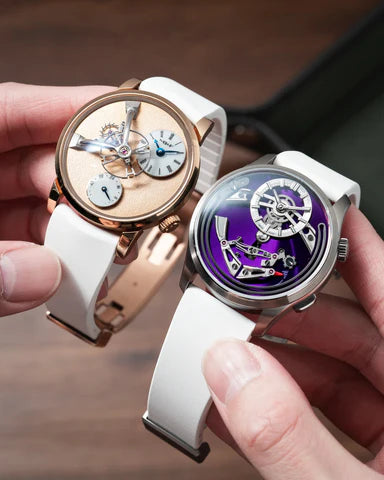

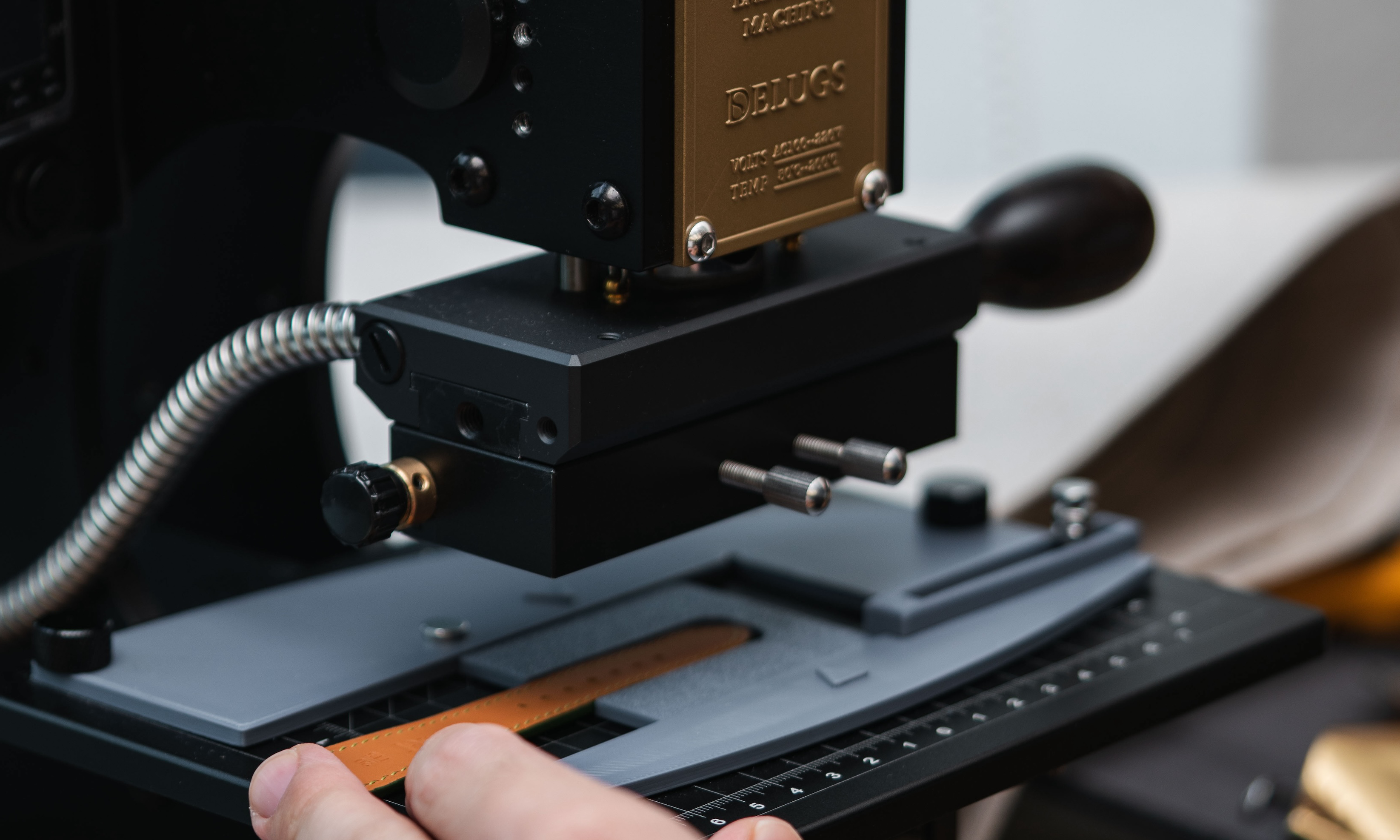


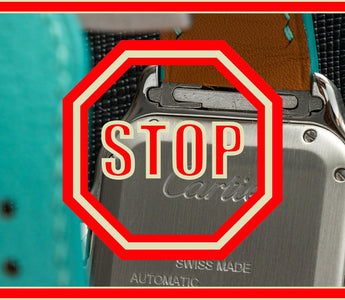
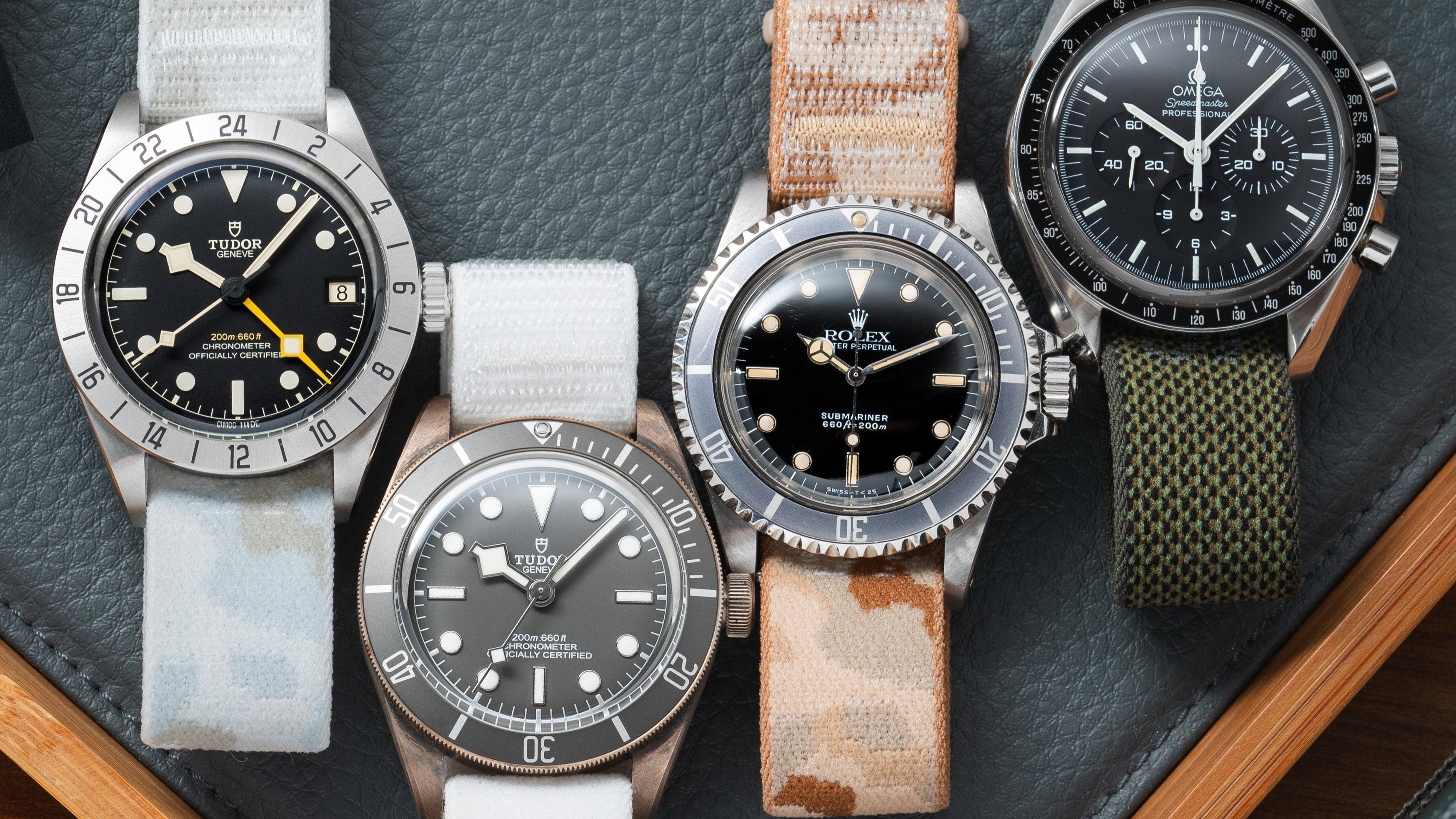
![Anthracite Hook Strap [kollokium x Delugs]](http://delugs.com/cdn/shop/files/20250919-A7405309_298x298_crop_center.jpg?v=1761299094)
![Anthracite Hook Strap [kollokium x Delugs]](http://delugs.com/cdn/shop/files/Kollokium_straps_Anthracite_1_298x298_crop_center.jpg?v=1761299094)
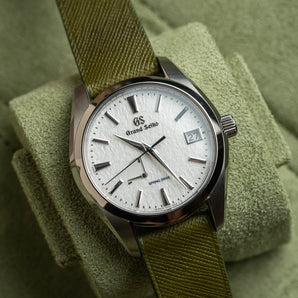
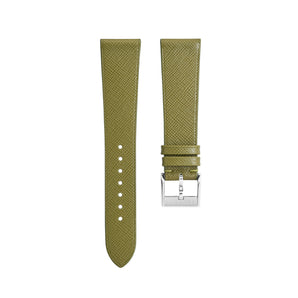
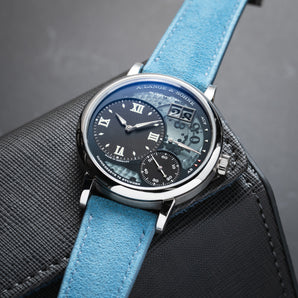
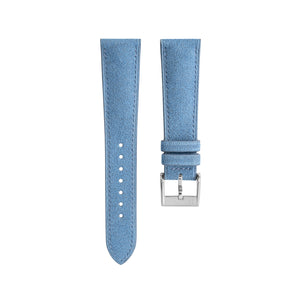
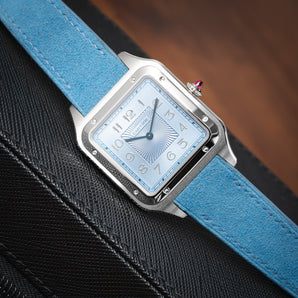
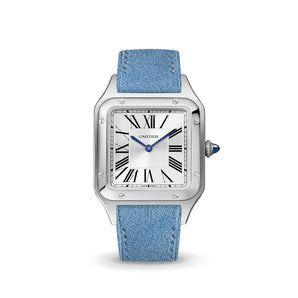
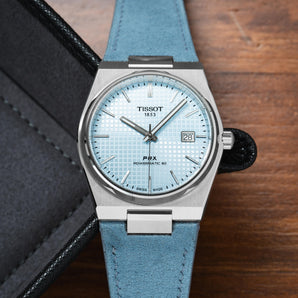
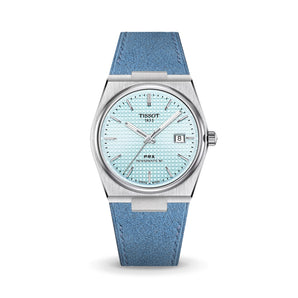
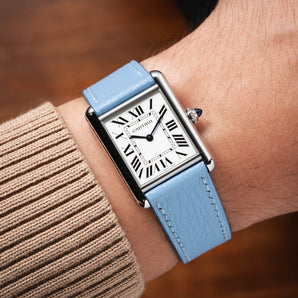
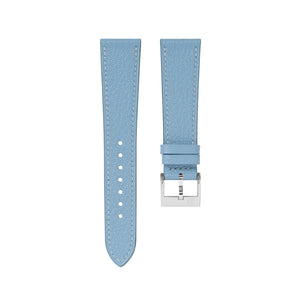
 Buy One, Get One 15% Off
Buy One, Get One 15% Off
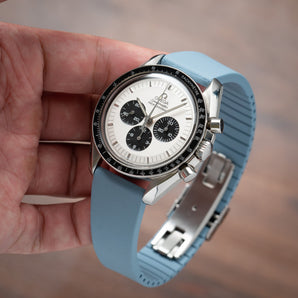

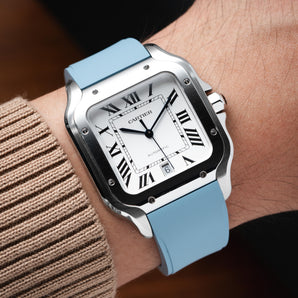
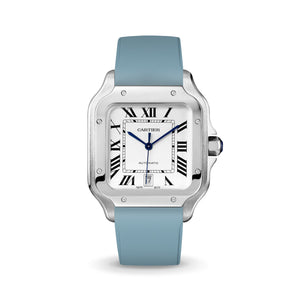
![Baby Blue CTS Rubber Strap for IWC Ingenieur [Prototype]](http://delugs.com/cdn/shop/files/20251001-DSC02482_1_298x298_crop_center.jpg?v=1759730616)
![Baby Blue CTS Rubber Strap for IWC Ingenieur [Prototype]](http://delugs.com/cdn/shop/files/IWC_Ingenieur_Rubber_CTS_Baby_Blue_298x298_crop_center.jpg?v=1759303635)

